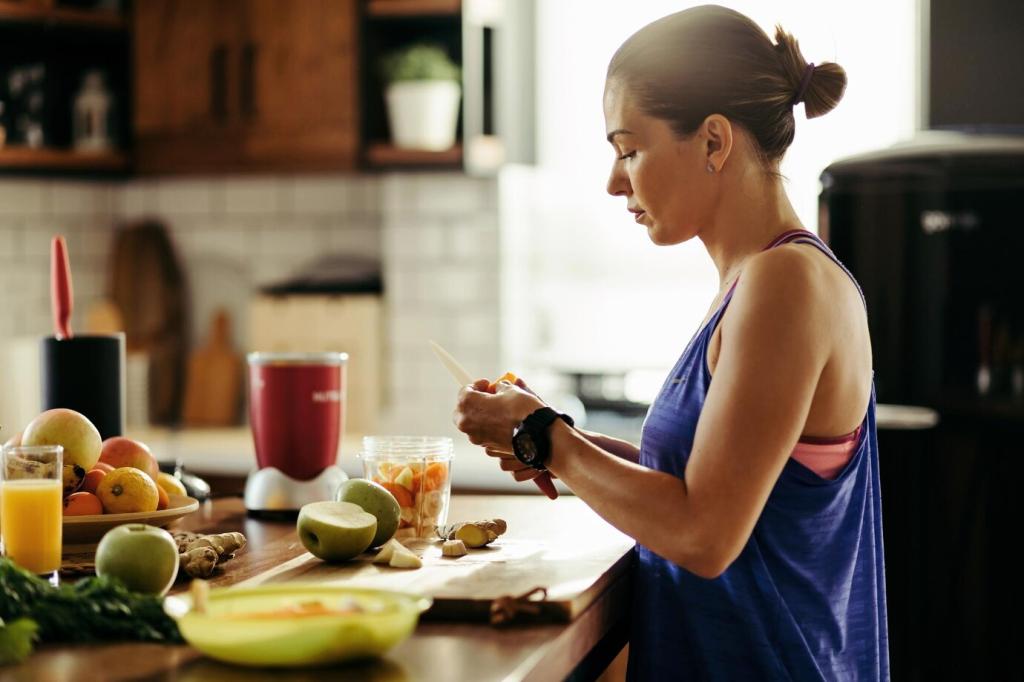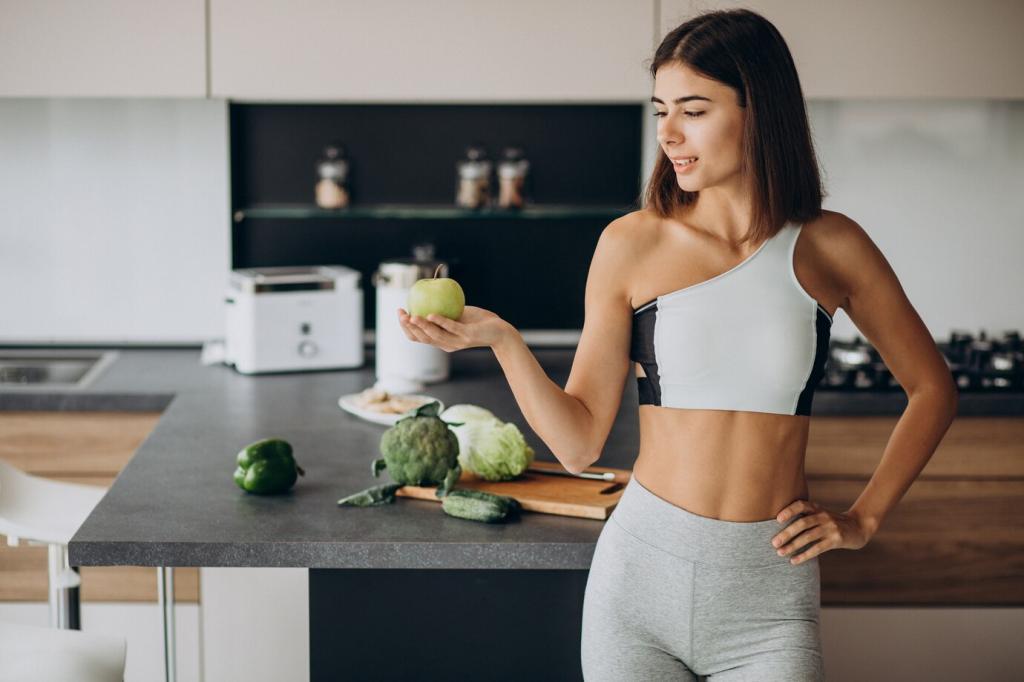
Fuel + Move: Pairing Diet with Effective Home Workouts
Welcome to a space where smart meals and living-room training click into place. We blend practical nutrition with doable, time-efficient home workouts so you feel stronger, lighter, and more in control—without gym anxiety or complicated recipes. Chosen theme: Pairing Diet with Effective Home Workouts.
Fuel and Flow: How Nutrition Powers Home Training

Energy Balance Without Guesswork
Your body runs on the basics: energy in, energy out, and recovery in between. Estimate your maintenance calories, then set a small deficit or surplus to match your goal. Pair that with consistent home workouts and you’ll avoid extremes, build momentum, and keep energy steady enough to actually look forward to training.

Macros That Match Your Moves
Protein drives repair and strength from home: aim for roughly 1.6–2.2 g per kilogram daily. Carbs fuel intensity on HIIT days, so cluster them near sessions for extra punch. Dietary fats support hormones and satiety; keep them steady but lighter right before fast workouts to dodge sluggishness and digestive drama.

Real-Life Story: The Living-Room Turnaround
Maya swapped random snacking for a protein-rich breakfast and a pre-workout banana before her twenty-minute living-room circuits. Eight weeks later, she dropped six kilograms, but more importantly, stopped napping after lunch. Her secret wasn’t perfection; it was pairing simple meals with consistent, short sessions. Share your story to inspire someone else.
Pre-Workout: Eat to Train, Not Train to Eat
If you have sixty to ninety minutes, a balanced mini-meal works beautifully. Closer to go-time, choose a small, low-fiber snack to prevent gut grumbles. Experiment with a light option fifteen to thirty minutes out, then reflect: did you feel springy, strong, and focused? Adjust tomorrow’s timing based on that honest check-in.
Pre-Workout: Eat to Train, Not Train to Eat
Think banana with peanut butter, Greek yogurt with honey, or rice cakes with turkey. Keep portions modest, prioritize easy carbs, and include a hint of protein if you tend to fade mid-session. Make it repeatable, not fancy. Tell us your favorite pre-workout nibble—your idea might become someone else’s consistency hack.



Post-Workout Recovery You Can Taste
Aim for twenty-five to forty grams of high-quality protein within a few hours of training, then spread protein evenly across your meals. Eggs, tofu, Greek yogurt, cottage cheese, and lean meats are all great at home. The real win is consistency across the day, so make your next meal count without overthinking timing.
Post-Workout Recovery You Can Taste
After tough sessions, pair protein with a reasonable carb serving—fruit, oats, rice, or potatoes—to restock energy. Consider three to five grams of creatine daily for strength and performance; timing matters less than taking it consistently. Keep it simple, sip some water, and let your next set feel a little easier.

Match Your Plate to Your Plan
Highlight protein at breakfast and dinner, then bookend your workout with a carb boost for performance. Think omelet with toast in the morning, chicken and potatoes at night, and a quick yogurt cup close to training. Keep fats moderate before sessions so you stay powerful, comfortable, and ready to push heavier.
Match Your Plate to Your Plan
HIIT thrives on readily available carbohydrate. Center a ripe fruit, oats, or rice near your session, then follow with a balanced meal to recover. On these days, a little honey or jam on toast can feel like rocket fuel. Track your perceived exertion to see the clear difference strategic carbs make.
Kitchen Systems for Consistency
Roast two sheet pans of vegetables, cook a pot of grains, and prepare a protein or two on Sunday. Portion into containers with sauces you love. When training time comes, you can assemble a pre- or post-workout meal in minutes, no stress, no debates, just reliable nutrition that supports your living-room grind.

Progress You Can Measure
Small Data, Big Change
Measure what you can control: reps, sets, rest times, step count, and a simple daily energy score from one to ten. That little dashboard tells you whether to push or pause. Comment with your favorite tracking method, and we’ll feature a community template for folks who prefer pen and paper.
Adjusting Macros and Moves
Plateaued for two weeks? Trim roughly two hundred calories or add a training set to big movements—never both simultaneously. Evaluate for another two weeks before changing again. Small, patient adjustments beat dramatic swings, especially when your training lives at home. Your future self will thank you for staying steady.
Celebrate Non-Scale Victories
Better sleep, fewer afternoon crashes, one more push-up, or jeans fitting comfortably—these are powerful signals your pairing works. The scale is one data point, not the verdict. Post a non-scale win in the comments today and remind someone that progress is a feeling as much as a number.
Community and Accountability
Tell us the snack or mini-meal that gives you reliable energy at home. Include timing and portion details, and whether you train in the morning or evening. Your tip might save another reader from guesswork tomorrow and spark a routine that finally sticks through a hectic week.

